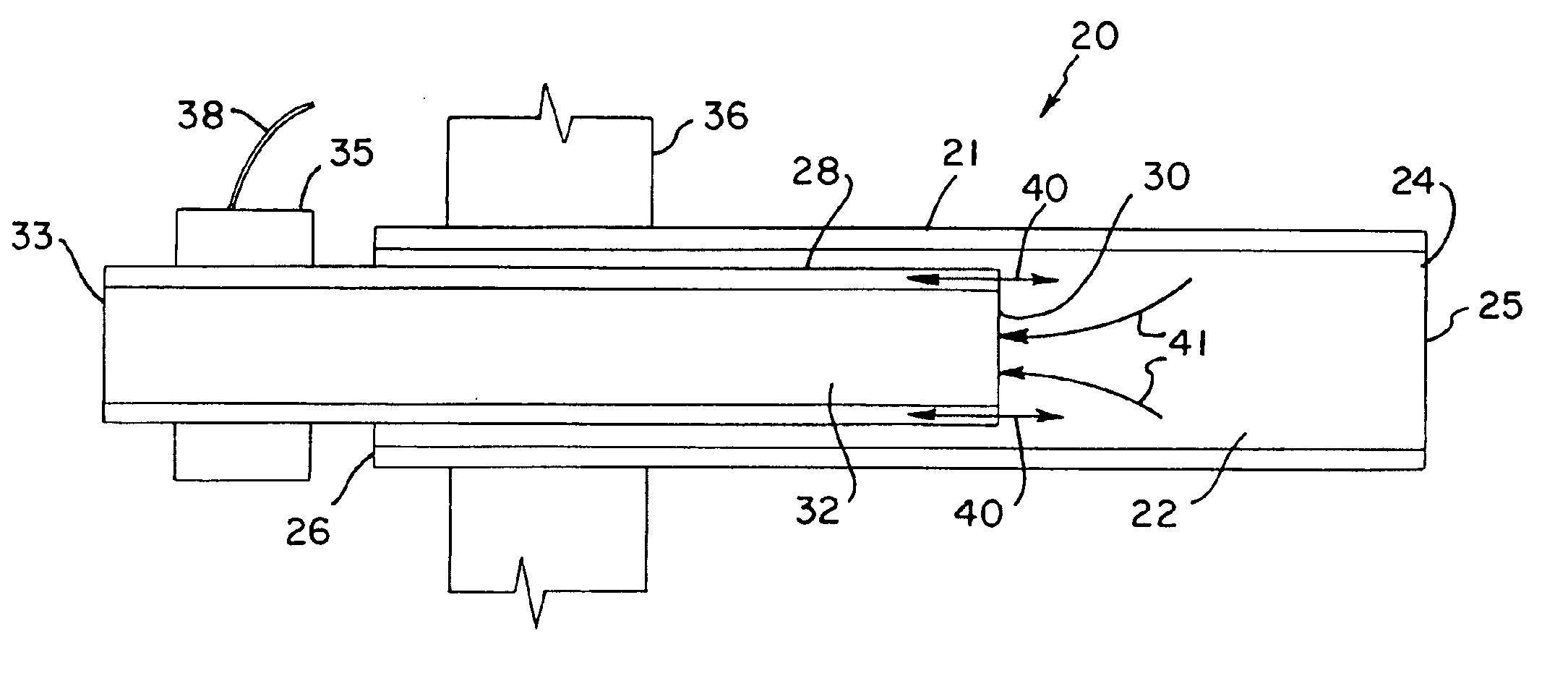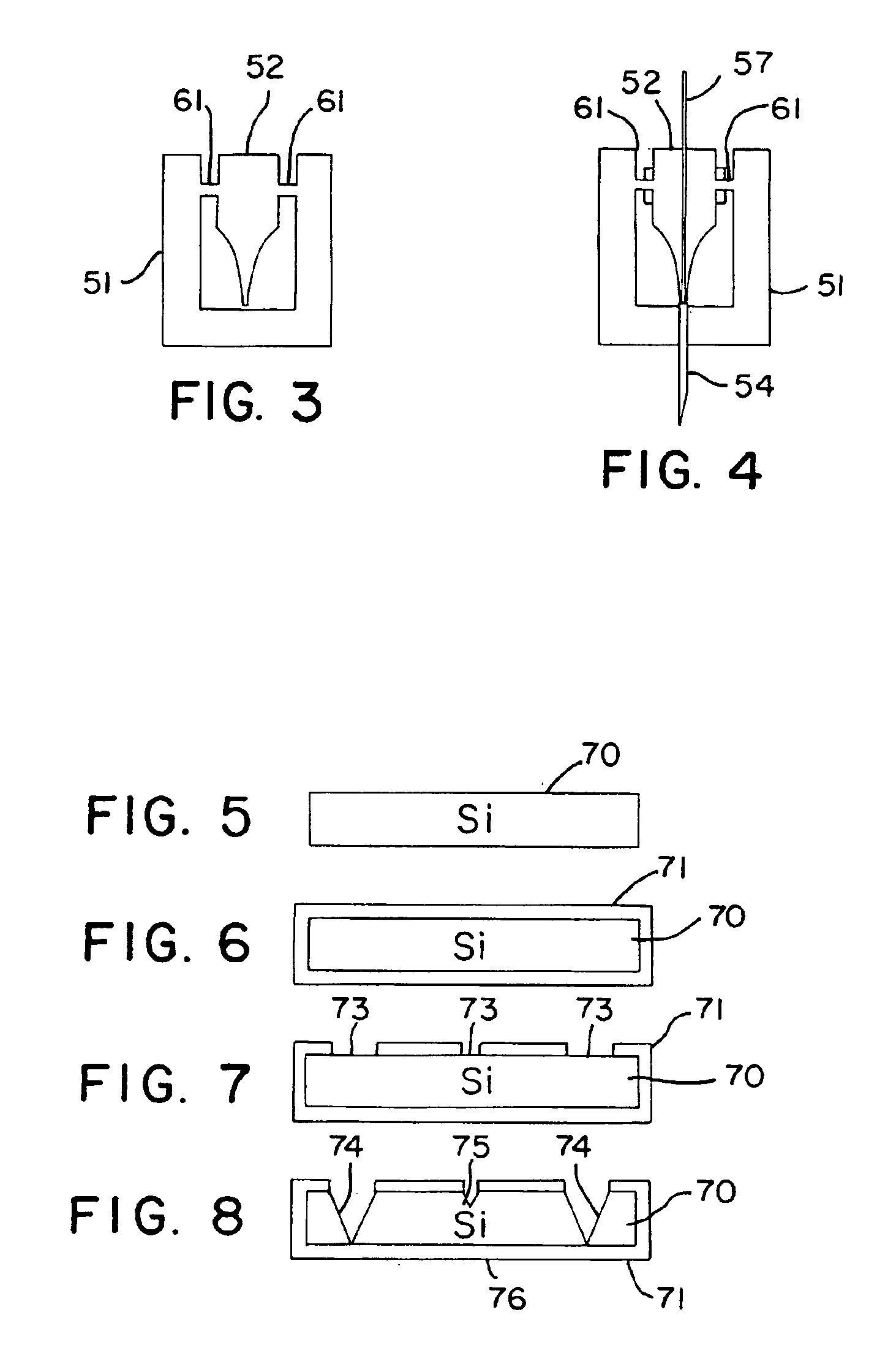Ultrasonically actuated needle pump system
a technology of ultrasonically actuated needles and pump systems, which is applied in the field of micromechanical systems and ultrasonically actuated needles, can solve the problems of complication, incident tissue damage becomes particularly a problem, and the use of such needles is accompanied by tissue damage, so as to achieve efficient pumping of body fluids
- Summary
- Abstract
- Description
- Claims
- Application Information
AI Technical Summary
Benefits of technology
Problems solved by technology
Method used
Image
Examples
Embodiment Construction
A simplified cross-sectional view of an ultrasonically actuated needle pump for fluid sampling or atomization in accordance with the invention is shown generally at 20 in FIG. 1. The ultrasonic pump includes an outer tubular needle 21 having an inner bore 22, which may be circular as shown, a distal end 24 which has an end opening 25 that may be formed blunt as shown (or the opening may be cut on a bias to form a penetrating tip), and a proximal end 26. A tubular inner needle 28 is mounted within the bore 22 of the outer needle 21 and is not secured to the surfaces of the bore 22 so that it can move longitudinally without substantial interference from the outer tubular needle 21. The inner tubular needle 28 has a distal end 30 which, as shown in FIG. 1, is adjacent to but preferably spaced from the distal end 24 of the outer tubular needle 21. Preferably, the distal end 30 of the inner needle is spaced from the distal end 24 of the outer needle by a distance in the range of a fracti...
PUM
 Login to View More
Login to View More Abstract
Description
Claims
Application Information
 Login to View More
Login to View More - R&D
- Intellectual Property
- Life Sciences
- Materials
- Tech Scout
- Unparalleled Data Quality
- Higher Quality Content
- 60% Fewer Hallucinations
Browse by: Latest US Patents, China's latest patents, Technical Efficacy Thesaurus, Application Domain, Technology Topic, Popular Technical Reports.
© 2025 PatSnap. All rights reserved.Legal|Privacy policy|Modern Slavery Act Transparency Statement|Sitemap|About US| Contact US: help@patsnap.com



